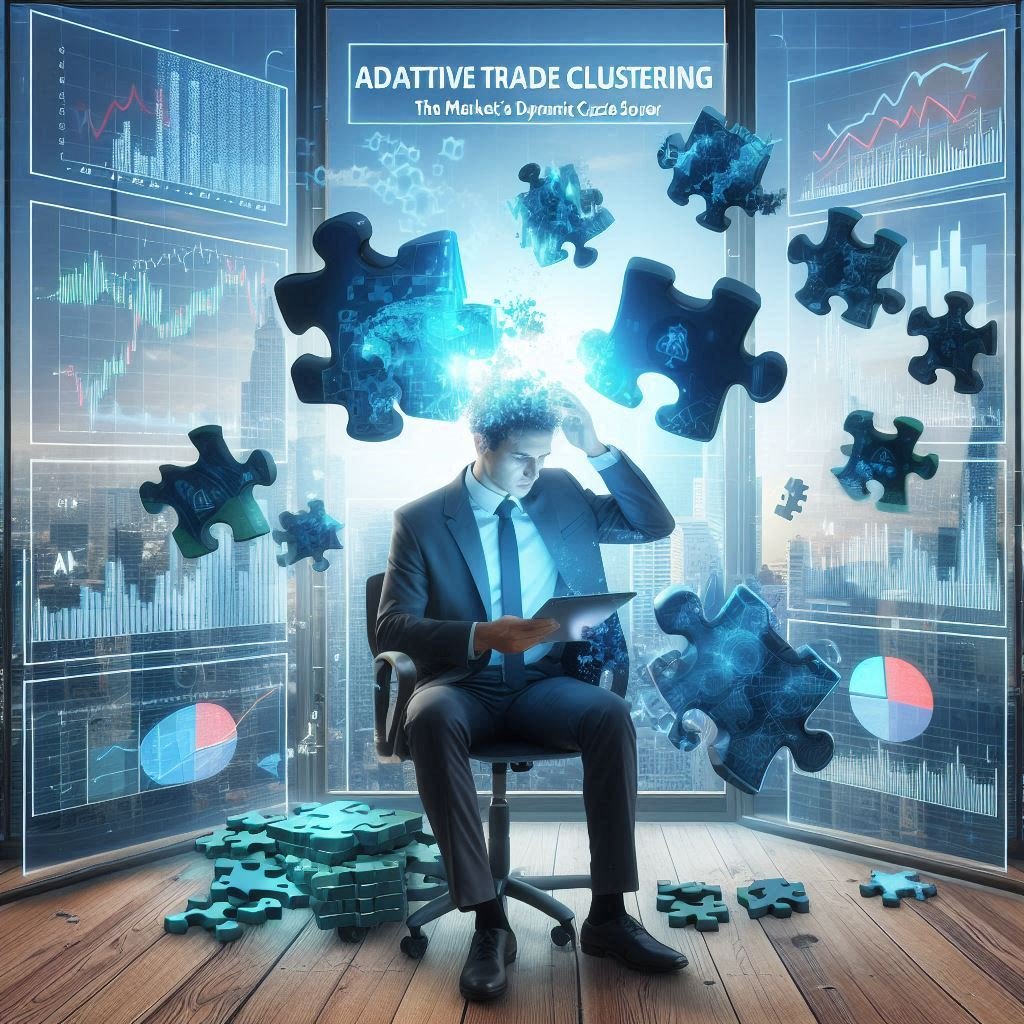Imagine trying to solve a giant jigsaw puzzle — but here’s the catch: the puzzle pieces keep changing shape as you try to fit them together. One moment, two pieces seem to connect perfectly; the next, the edges shift, and what seemed like a match no longer fits.

This is the challenge faced in modern prop trading when analyzing market trades. Traditional methods group trades by fixed, static criteria — like size, asset type, or time of day — but markets are fluid, alive, and constantly evolving. This is where Adaptive Trade Clustering shines. It’s the master puzzle solver that adapts in real time, grouping trades not by rigid rules, but by the ever-shifting dynamics of the market itself.
Static Clustering: The Dinosaur of Trade Analysis
Static trade clustering is just that: it looks at trades through fixed lenses. For example, it might group all trades over 10,000 shares together, assuming they share similar behaviors. But markets don’t work that way.
In prop trading, the same 10,000-share trade during a calm morning session behaves vastly differently than during a frantic, volatile news event. Static clustering misses this nuance — it’s like trying to read a novel with half the pages glued together.
Adaptive Clustering: The Chameleon of the Trading World
Now imagine a chameleon that changes color with its environment, blending perfectly whether it’s on a leaf, a branch, or bark. That’s Adaptive Trade Clustering — it dynamically shifts its grouping criteria based on current market conditions.
Rather than grouping trades by static buckets, it clusters based on features like:
- Current volatility
- Momentum and trend strength
- Liquidity changes
- Order book dynamics
- News flow and market sentiment
In other words, it looks at the whole context — the ecosystem of the market — and groups trades that truly behave similarly, even if they look different on paper.
Why Prop Trading Firms Are Obsessed With Adaptive Clustering
For prop trading desks, detecting inefficiencies is the key to alpha. If you can identify patterns in trade behavior that others miss, you can exploit opportunities before they vanish.
Adaptive clustering helps:
- Reveal hidden trade patterns that static methods bury
- Detect subtle shifts in market microstructure
- Identify clusters of trades ripe for arbitrage or hedging
- Improve signal-to-noise ratio in trading algorithms
- Optimize execution by tailoring strategies to evolving clusters
This isn’t just analytics — it’s real-time market intuition encoded in data science.

The Orchestra Conductor Analogy
Imagine an orchestra playing a symphony. Static clustering is like grouping instruments by type regardless of the music — all violins together, all drums together — and expecting harmony.
Adaptive clustering, however, is like the conductor listening and grouping by melody, tempo, and rhythm — bringing together the right instruments to play in sync at each moment.
Similarly, in prop trading, Adaptive Trade Clustering harmonizes trades into meaningful groups that reflect the current “musical score” of the market.
How It Works Under the Hood
- Continuous Market Sensing
Algorithms continuously monitor market indicators and trade features. - Feature Engineering on the Fly
New trade characteristics are generated dynamically, reflecting current conditions. - Clustering Algorithm Updates
Models like density-based clustering or dynamic k-means adapt their parameters in real time. - Feedback Loop Integration
The system learns from outcomes, fine-tuning cluster definitions to improve future trade grouping.
The Prop Trading Edge: Agility and Precision
In an era where prop trading success depends on speed and accuracy, adaptive clustering delivers agility. It prevents firms from chasing yesterday’s patterns and instead tunes them into the living heartbeat of the market.
By grouping trades intelligently, firms can:
- React faster to regime shifts
- Tailor risk controls by cluster behavior
- Deploy capital more efficiently
- Stay ahead in the competitive alpha hunt
The Puzzle, Solved
Markets are no longer static puzzles — they’re dynamic mosaics, shifting shapes in real time. Adaptive Trade Clustering is the breakthrough method that sees through this complexity, grouping trades by true similarity in an ever-changing landscape.
For prop trading, it’s the difference between guesswork and insight, between reacting to yesterday’s news and anticipating tomorrow’s moves. It’s not just clustering — it’s smart clustering.
And in the fast-paced world of prop trading, smart is everything.




